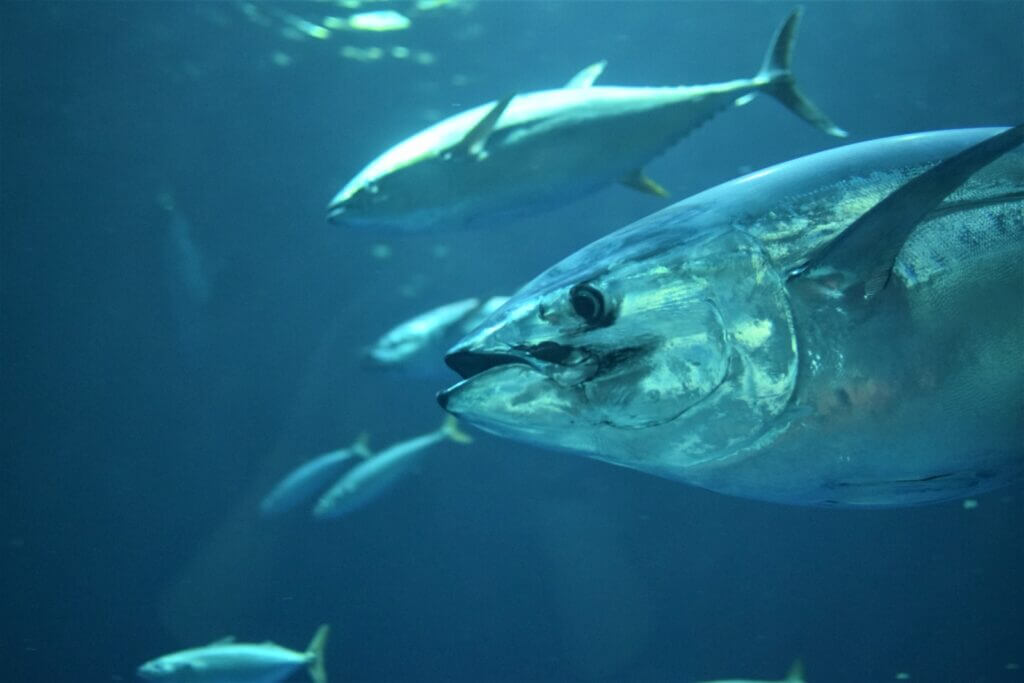You’re standing in the seafood section trying to decide between albacore and tuna. They seem pretty similar – after all, albacore is a type of tuna. But there are some key differences that will help you determine which one to choose for your recipe or meal.
Introduction
Let’s start with a quick rundown of exactly what albacore and tuna are:
Albacore – Albacore is a specific species of tuna with the scientific name Thunnus alalunga. It is also sometimes called longfin tuna. Albacore is found in temperate waters around the world.
Tuna – Tuna is a general term that refers to many species of fish in the family Scombridae, including albacore. The most common edible tuna species are skipjack, yellowfin, bigeye and bluefin tuna.
While albacore belongs to the tuna family, there are some notable differences when it comes to taste, texture, nutrition, and sustainability.
Taste and Texture
One of the biggest differences between albacore and tuna is the taste and texture:
Albacore – Albacore is prized for its mild, delicate flavor and flaky texture. The flesh is white. Many people describe it as the “chicken of the sea” since it does not have an overly fishy taste.
Tuna – The flavor and texture of tuna varies more widely depending on the exact species. In general, tuna has a stronger, more pronounced flavor than albacore, ranging from moderate in yellowfin to robust in bluefin. The flesh has a more fibrous muscle texture.
So if you’re looking for a subtler, flakier fish, albacore is likely to better suit your preferences. Tuna is better for those who enjoy bolder fish flavors.
Nutritional Value
Both albacore and tuna are great sources of lean protein and nutrients:
- Protein – Albacore and tuna are high in protein. A 3 ounce serving of either provides around 20 grams of protein.
- Omega-3s – They also provide anti-inflammatory omega-3 fatty acids. Albacore has slightly higher levels than some tuna species.
- Mercury – Due to tuna’s longer lifespan and higher mercury levels in the environment, tuna tends to contain more mercury than albacore.
If your main health goals are increasing protein intake and getting more omega-3s, both are excellent choices. But limit high-mercury tuna species like bigeye if you eat tuna frequently.
Sustainability
The sustainability of each type of fish is another consideration:
- Albacore – Albacore populations in the Pacific, Atlantic, and Mediterranean are considered healthy and abundant. Most albacore is caught using more sustainable trolling or pole and line methods.
- Tuna – Some tuna species like bluefin are overfished, while skipjack and yellowfin remain fairly abundant. However, longline fishing methods used for tuna can threaten other marine life.
Eco-Certifications – Choosing albacore and tuna marked with certifications like “pole and line caught”, “troll caught”, or “MSC certified sustainable” helps support responsible fisheries.
If buying sustainable seafood is a priority, albacore is generally the more eco-friendly choice. Check for sustainability certifications on any tuna products.
Conclusion
So which one should you buy – albacore or tuna? Here are some quick tips:
- If you prefer a milder flavor and flaky texture, go with albacore tuna.
- If you want a bolder, meatier fish, choose tuna species like yellowfin or skipjack.
- For the healthiest choice lower in mercury, albacore is the best option.
- For the most sustainable choice, look for troll/pole caught albacore.
Of course, tastes vary, so it never hurts to try both for yourself. The next time you’re shopping for seafood, keep this guide in mind as you decide between albacore and tuna. Carefully choosing sustainable varieties of both helps support healthy oceans.








